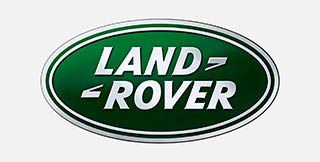
City slicker social mobility. The Vogue LSE demonstrated just how far the Range Rover had morphed from stark original to super luxury vehicle. We take one from country to town in a quest to explore its dual personality. Words Ross Alkureishi. Photography Neil Fraser.
Social Mobility
Testing the town-and-country abilities of the last-of-the-line Range Rover Vogue LSE – does it convince as both city slicker and rural tourer?
The contrast is considerable. Flick through the original 1970 brochure for the first Range Rover (identified by a Suffix A VIN number) and you’ll find images of a basic workhorse romping over hill and dale, by the sea pulling a trailer with a boat on it, and outside a traditional yet modest two-up two-down house. Notably, there’s just one photograph of it in an urban environment in the whole booklet.
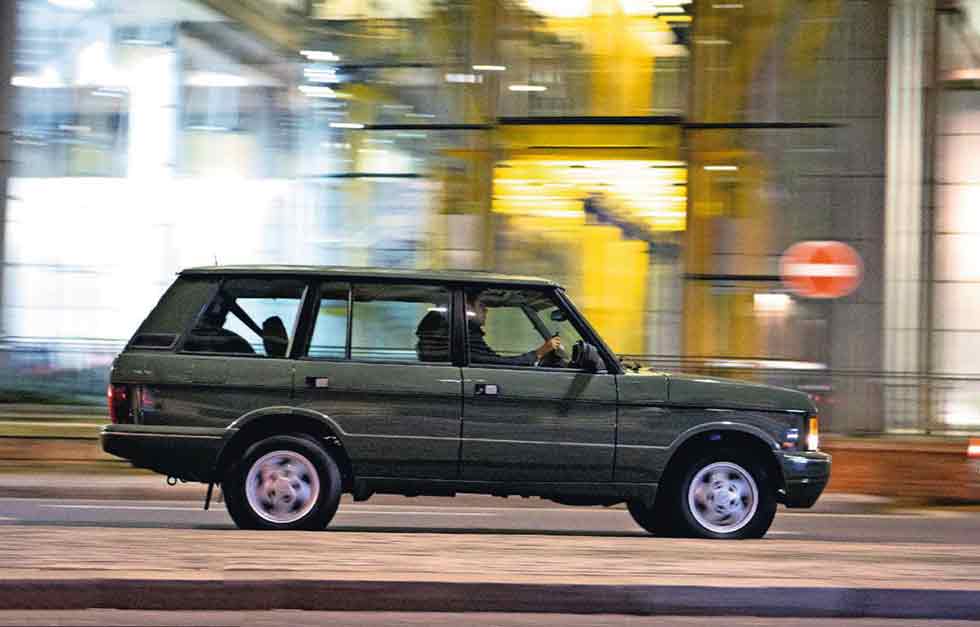
Come 1993 and the sales brochure centres on the figure of a distinguished-looking gentleman leaving his Georgian Kensington mansion to a chauffeur holding open the rear door of his Range Rover Vogue LSE. In the remaining pictures, substantial country piles, a Provencal village and even a coach and horses replete with liveried coachmen make an appearance.
‘In seemingly next to no time, my relaxed cruise is at an end and I’m in London proper’
That journey from utilitarian to overtly luxurious had taken a little over 20 years. Fast-forward to today and for me, it’s definitely the latter good life, as I enter pure Bobby Ewing/Dallas mode and take on an imaginary persona; sitting outside my own significant property – 150 acres in the Surrey stockbroker belt, don’t you know – is a magnificent 1994 Range Rover Vogue LSE.
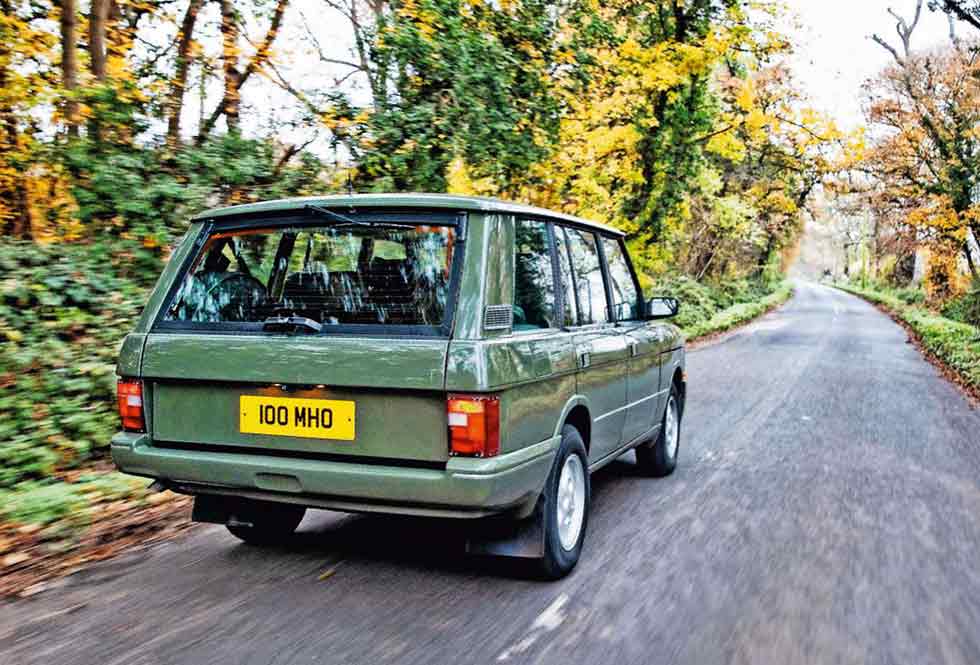
The classic profile is stretched – to the same 108in wheelbase as its P38 successor – by way of extra sections in each chassis frame side member and roof panel, as well as longer rear doors. You can always gauge a car’s desirability by those who desire it, and on release the Vogue SE instantly became an icon for every wannabe, pub landlord and East End geezer – it was in good company though, following on from multiple Jaguar, Rolls Royce and Bentley models.
I pop the door and, thanks to this later model’s pre-programmed air suspension – introduced for the 1993 models – climb easily up into the lowered cabin. From a technology perspective it was, for the time, fully loaded, with air conditioning, a six-speaker sound system, heated front seats adjustable in six ways – even with the ignition off – and electric sunroof, windows and mirrors. Couple that with a sea of soft Brown Saddle leather and light Italian Poplar (both unique to the LSE) wood trim, and here, bespoke Harris Tweed overmats. It’s a gloriously refined environment.
Turning on the ignition and sparking up the fuel-injected 4.3-litre version – introduced to offset the LSE’s extra weight – of the venerable Rover V8 sees nothing more than a light thrum fill the cabin. The air suspension completes the first of many little self-levelling dances – imagine someone climbing on to your water bed, beside you – as it readies for the off. Shift the automatic gearbox into drive, lower the handbrake and away we go.
As the gravel on my long driveway crunches under the car’s considerable 2150kg heft, I have time to consider how far both I – to afford this £40,899 beast, when new – and the Range Rover interior have come. The first examples had simple PVC upholstery; brushed nylon wouldn’t arrive until 1973 and even then, was optional.
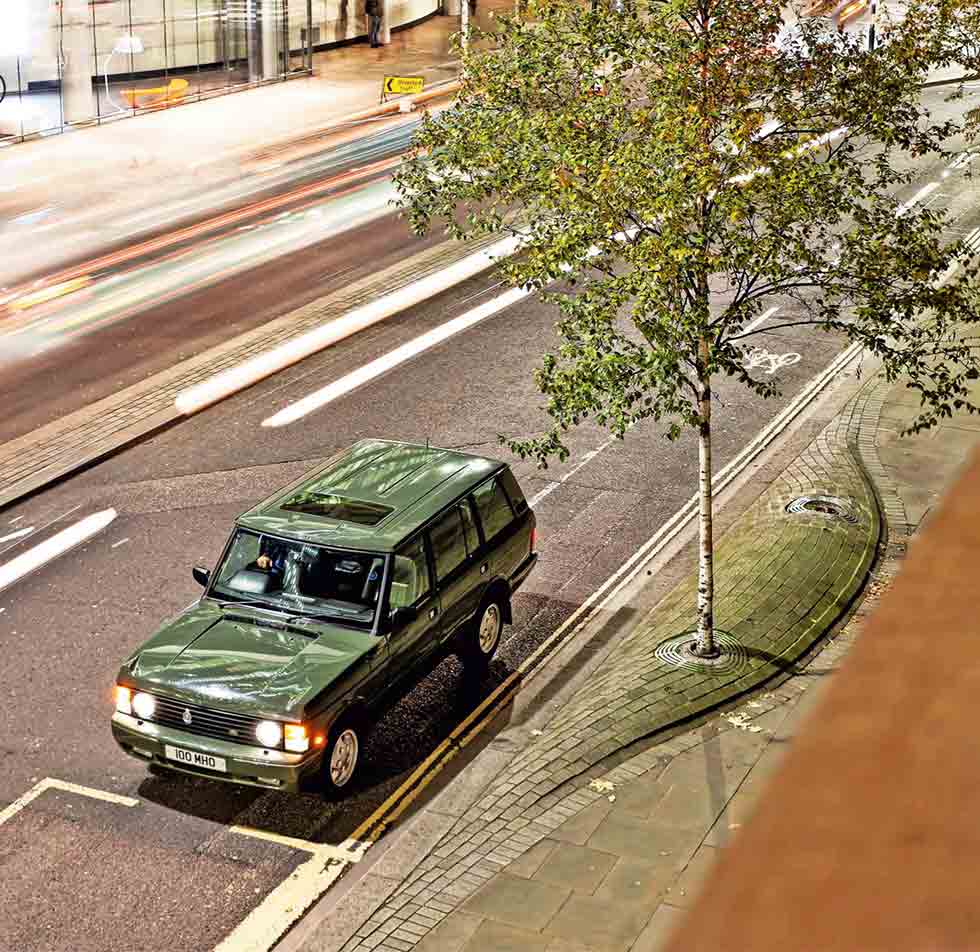
The Monteverdi four-door conversion of 1980 had a leather interior, and from thereon in the only way was upmarket.
Turning out onto a country lane with a nonchalant singlehanded turn of the power-assisted steering wheel, I depress the throttle and feel the first wellspring of torque as it surges the big LSE forward. There’s an accompanying light bass murmur that hints at considerable power reserves, and a series of barely perceptible twitches as the four-speed ZF ’box – which replaced the clunky Chrysler three-speed unit in 1985 – shifts through the cogs. First impressions are of just how bloomin’ easy this thing is to pilot.
Despite considerable off-road abilities of early variants, under heavy cornering they had a tendency to roll considerably, displaying their suspension wares like Mrs Slocombe hitching up her knicker elastic in the BBC comedy Are You Being Served?. Numerous suspension tweaks were made, with the first major one arriving in 1986 – larger front radius arm bushes, dual-rate coil springs at the rear and improved dampers helped improve cornering stability. Another for the 1990 model saw anti-roll bars made standard for the Vogue and Vogue SE. Combined with the air suspension, these tweaks mean that as I approach a long sweeper I’m able to push through fairly hard. The LSE does a good job of remaining rather composed; the steering isn’t particularly communicative, but by the same measure if I had passengers, its impressive body control would save them from unseemly lolling about in the cabin.
Over a crest and it’s… hard on the brakes as a variety of smaller vehicles at various stages of U-turn block my path. Luckily, the ABS-endowed anchors – introduced in 1990 – are up to the job. Instead of an eye-widening skid and slow-motion descent into the side of a hatchback, the firm pedal instigates a rapid plethora of imperceptible pulses, and I stop in time – just. At the bottom of the dip sits the cause: a flood, the result of recent inclement weather.
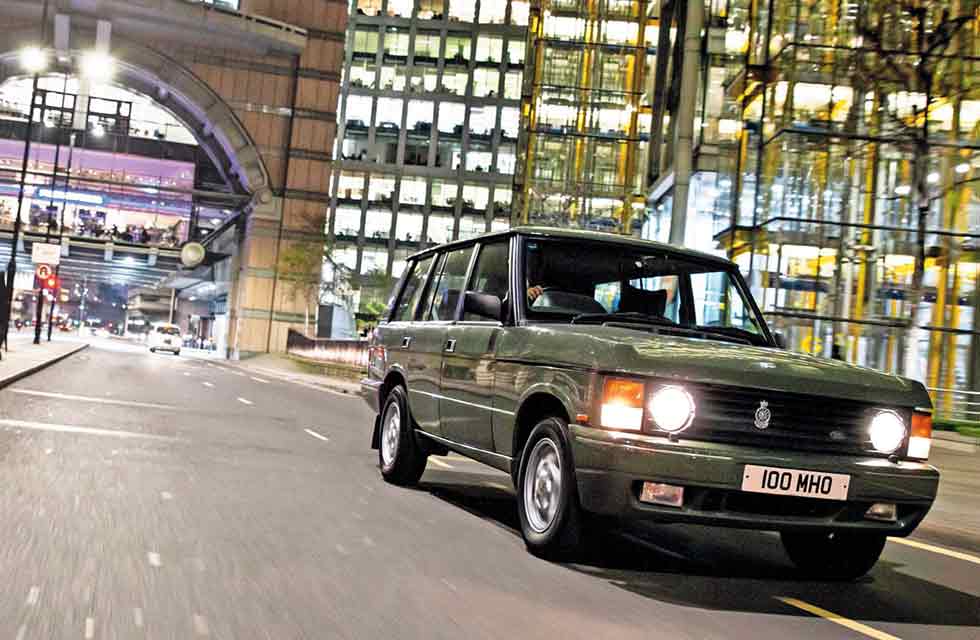
I eye up the steep farmer’s field to my right; there’s no doubt the Range Rover would handle it, soggy or not. Instead though, I reach immediately to the left of the steering wheel and press the button on the dashboard marked with an ‘up’ arrow and the suspension slowly starts to rise; Mrs Slocombe is now on tip-toes, and I traverse the flood without a care. This model year retains its predecessors’ undoubted off-road capabilities, but by this point in its evolution the likelihood of most luxury Vogue SE/LSEs going seriously off-road would have been negligible.
Ten minutes later I’m accelerating hard on the A3, the electronic traction control on the rear axle reining in any wheelspin from a heavy right foot. The suspension dips automatically at 50mph for marginally – it is brick-shaped, after all – improved aerodynamics. At high-speed it’s just as polished, the Vogue’s upgraded sound deadening and that cosseting suspension ensuring a calm cabin. So accomplished is it that in seemingly next to no time, my relaxed cruise is at an end and I’m in London proper.
Attempting this commute in a ‘Suffix A’ car would be bordering on the masochistic, but as DelBoy might’ve said, the Vogue LSE is an entirely ‘different kettle des poissons’.
Wimbledon and Putney are quickly dispatched, before I veer off towards Battersea; I nod my head across the river Thames towards the area that lent the Range Rover and its various aspirants the derogatory ‘Chelsea Tractor’ moniker. In fact, as early as 1980 Motor had stated, ‘As a true luxury workhorse, the Range Rover comes out a clear winner. Its off-road capabilities mean that it is equally at home on the farm as it is in trendy Chelsea.’
The arrival of the In Vogue magazine tie-up special editions between 1981 and 1983 started the model’s inexorable specification rise, but it was the coming of the Vogue SE (Special Equipment) in 1988 that saw it develop into a contender in the luxury car sector. As my urban adventure slows to a crawl, it’s clear that my steed is equally happy in town. In fact, if you put its once-gargantuan proportions – it’s not large by 2020 standards – to one side, it’s as easy to drive as a modern hatchback. Twists, turns (three-point, and all) are dispatched with ease; in fact, it’s just the V8’s thirst (19mpg combined, significantly less here in town) that has your eye twitching should it momentarily meet the fuel gauge. In 1993 you could have a 111bhp 200TDI, but it has to be a V8, doesn’t it?
Of course in period, fuel costs would have been an irrelevance; if a dashing city lad/cad such as myself could have afforded the ticket price then a few extra tenners on the price of a weekly tank of fuel wouldn’t have touched the sides of my Coutts bank account. However if I put my moneyed stockbroker daydream to one side for a moment, this city commute is one that dealer Graeme Hunt, from whom I borrowed the car, used a Vogue LSE for when new, and still does. ‘It was a real step-change. Range Rover suddenly decided that as good as the four-wheel drive was, people wanted a bit more luxury. You’ve got to remember there was no BMW equivalent.
This was the only game in town, and it changed the benchmark. There are no compromises to driving one in a city environment. Yes having the four-wheel drive is unnecessary, but it has a nice smooth engine and that lovely driveline.’
It’s true, as my daisy-fresh arrival in the City of London proves. I park up near London Wall; time now to head to my office and earn a crust. My working day in commodities trading flashes past, and it’s early evening (they graft long and hard, here) – kicking out time in the City. At one time the silhouette of the Range Rover wouldn’t have been given a second glance, but today its angular lines stand out amid a sea of homogeneous high-class and mainly German modern metal, black cabs and New Routemaster buses, its clean, boxy lines see it the centre of attention.
And boy do I need its mechanical sophistication; it’s absolute chaos on the roads. City workers dressed predominantly in black doing their best impressions of lemmings careening off a cliff, as they dive blindly across roads in their sheer desperation to get home. The soothing sound of BBC Radio 2 doesn’t seem quite so apt now for what I’m witnessing, so I switch to another channel; rap star Dizzee Rascal’s Bonkers fills the cabin, the windows seeming to reverberate outwards to its hardcore bass beat – perfect. It’s Groundhog Day stuff as the LSE’s gruff understated V8 thrum under load is followed sharply by the ABS braking and air suspension systems earning their collective pennies – and repeat.
If this feature has whetted your appetite and you’re considering buying one then specialist Graeme Hunt says you should go for a Vogue SE rather than a Vogue, ‘The Vogue doesn’t have the delicate upgrades as standard; these include the electric sunroof, air conditioning, leather upholstery and electric front seats. The use of wood in the SE’s interior is also more prolific.’
There are caveats, though. ‘Like all first-generation Range Rovers, be they 1971 or 1993, they are prone to rust. You must check underneath thoroughly because the sills, floor pans, inner wings, front cross member and tailgate all corrode. A full body restoration can cost £25k to £40k, so it’s best to buy one that has a known history and has been looked after. Some owners buy them and drive them like a new car, leaving them covered in mud after trips to the country, but that will ensure problems in a few years time. A good example will have had its underside scraped clean and undersealed each year, with any necessary repairs made.
‘Batteries for the electric motors on the front seats also leak and can corrupt ECUs; repairs are difficult and cost between £350-£850.’ Problems with the later air suspension system – and bodged repairs on examples run on a shoestring – can also cost a fortune, because it’ll require specialist diagnostic equipment to find the root cause.
At a time when British Aerospace ownership had seen a gamut of parts rationalization with the Discovery model, the addition of that sophisticated suspension system bucked the trend, because it was effectively a production test-bed for the later P38 – a car that initially at least, would be constructed alongside the original, which was instantly designated the Classic.
It transformed the ride both in town and out in the country, and with live axles still required for its redoubtable off-road ability – ruling out independent suspension – it provided the perfect solution. Seemingly a world away from this asphalt jungle, the Vogue SE proved just as popular with the landed gentry and farmers alike. Although the latter would use them for towing sheep to market, going shooting and sojourns to town, the reality was that they’d probably have a Defender 110 for the really heavy work.
My own return journey to the country isn’t going to happen, as my Walter Mitty-esque musings dissipate. To be fair it was all beginning to become a bit of a nightmare, anyway; gone is the large country pile, the high-maintenance litigious ex-wife, the demanding trust-fund offspring, and my marginally psychotic mistress ensconced in a one-bedroom flat in Kensington. In their place, though, remains the Range Rover. A car that conquered the US market some 17 years into its production cycle, and that saw a symbiotic relationship develop between owners and manufacturer in which the latter’s drive upwards was embraced, and then positively demanded by the former, resulting in both the Vogue SE and LSE. Today, when you’d think we’d all be going eco mad, we are instead going 4×4 crazy; sports SUVs, crossovers, luxury SUVs, high-performance SUVs, hybrid SUVs, supercar SUVs – you name it, it’s out there. And this is the great granddaddy of them all.
Who’d have thought that the original basic model could one day have sat comfortably side-by-side in the most exalted motoring company? ‘Shall we take the Bentley tonight, darling?’ ‘No, let’s take the Range Rover.’
Thanks to: Graeme Hunt Ltd (graemehunt.com) where this Range Rover Vogue LSE is currently for sale
City slicker – Range Rover Vogue LSE is perfectly at home in the urban jungle. Four-speed auto makes it a doddle to drive in town. Extending the wheelbase by 8in (200mm) boosted rear passenger legroom. In its luxury ascent, the Range Rover lost none of the original car’s 4×4 capabilities Alkureishi ‘lording it’ from the elevated driving position Smooth and barely audible 4278cc V8 gives ample grunt Menacing looks are down to a TWR bodykit Lashings of wood and leather lend a luxury feel. Hey Big Spender! Vogue LSE would have cost a whopping £40,899 before options in 1994. Cityscapes are now the luxury 4×4’s natural habitat, and it all began with the Range Rover.
1994 Range Rover Vogue LSE
Engine 4278cc V8, ohv, Lucas Multiport L-Jetronic fuel injection
Max Power 200bhp @ 4850rpm
Max torque 250lb ft @ 3250rpm
Transmission Four-speed ZF automatic, all-wheel drive via viscous coupling and Borg Warner transfer case
Steering Worm and roller, power assisted
Suspension Front and rear: beam axle, coil springs, telescopic dampers, anti-roll bar; all round electronic air suspension
Brakes Discs front (ventilated) and rear, ABS, electronic traction control
Weight 2150kg (4740lb)
Performance 0-60mph: 9.9sec;
Top speed: 112mph
Fuel consumption 19mpg
Cost new £40,899
CC Price Guide £5000-£22,500
OWNING A VOGUE SE
Robin Faul says of his 1995 ‘soft-dash’ Vogue SE, ‘I bought it nearly five years ago for £2000. I replaced the rear brake pipes after they split during an MoT brake test – that cost less than £100 including the tools and parts, because I work on it myself. I also reinstated the factory air suspension – the parts cost £40 and it’s now working a treat.’ Prior to Robin’s ownership the car was converted to LPG, which he retained. ‘In order to use it I have to keep running costs down; at 16mpg it is equivalent to approximately 30mpg on petrol.
‘While it doesn’t have sports car handling, it is a dream to drive – the air suspension means it glides along serenely, with that smooth V8 tone in the background – I try to take it off-road quite a bit, because that’s what it was made for and it’ll go anywhere I dare to try.
‘It’s not my daily driver, but if I worked closer to home I’d consider using it as such; there are many that do. It’s a capable, practical classic.’
DRIVING POLICE RANGE ROVERS
Mick Gipp joined the Cambridgeshire traffic police force as a PC in 1984, later rising to Chief Superintendent of the Operations Portfolio – which included management of the Traffic and Firearms fleets. ‘Our Range Rovers were basic two-door models with a 3.5-litre V8, a manual gearbox and additional police equipment. This included a blue light that would raise 15 feet to provide halogen downlights to illuminate a collision; they ran off two alternators that required the engine to run at 3500rpm – it drank petrol like no tomorrow!
‘They were great fun to drive, but a little unsteady at high speed because of the extra weight, and I swear you could see the fuel gauge moving. If you drove hard round a roundabout you could pick up the front offside wheel easily. It would always cope whether chasing harecoursers on steep mud inclines, or pulling lorries off a snowy B660. ‘Its updates were impressive, the interiors and additional doors made them more practical, while the power steering on later cars made it much easier to move huge turntable command trailers using the front tow hook – prior to that you could hardly use your arms the next day.
‘I liked them for what they were, not really pursuit cars but great command vehicles; if the weather or terrain were bad then they came into their own. Overall, the original police Range Rovers were basic and while they did the job well, comfort wasn’t high on the list. Its evolution made it much better, more practical and nicer to drive.’

